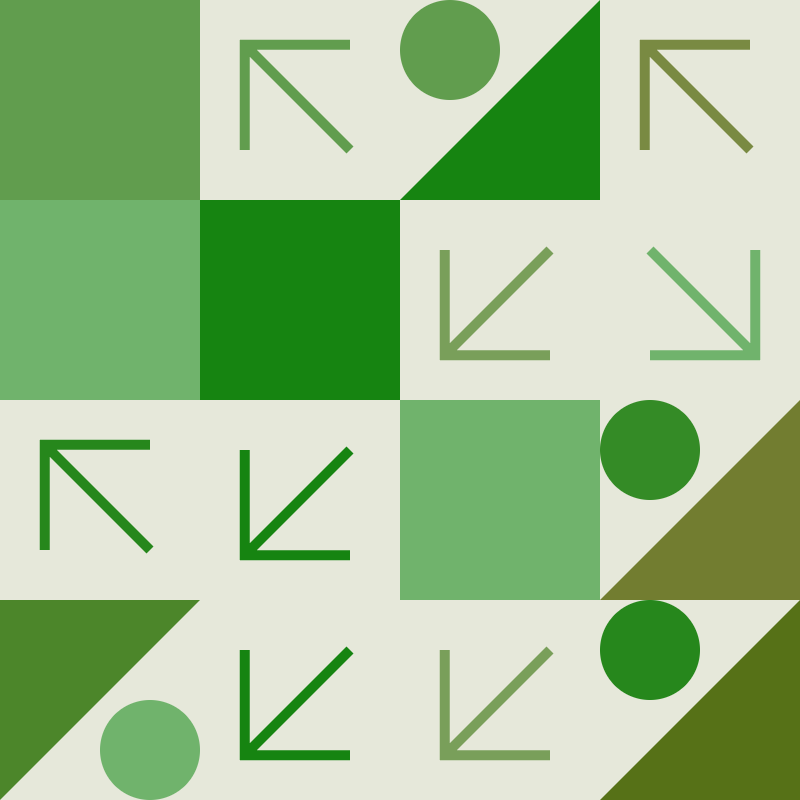Geometric patterns have long played a role in visual storytelling, and their use in publicationsranging from magazines and books to brochures and annual reportscontinues to grow. When thoughtfully applied, these patterns bring rhythm, cohesion, and a modern aesthetic that elevates the reading experience.
Why Geometric Patterns Work in Publications
In editorial design, geometric patterns serve as more than background elements. They guide readers, create visual breaks, and support thematic narratives. Whether you're designing a corporate report or a creative zine, geometric motifs can add structure and visual sophistication.
1. Establishing Visual Structure
Geometric patterns help designers organize content, making publications more digestible. Grids, lines, and repeating shapes can subtly divide sections, highlight headlines, or frame key information. These visual cues help readers navigate pages without feeling overwhelmed.
For instance, using hexagonal grids in a science journal layout can reinforce the theme while providing a flexible yet structured composition for text and images.
2. Supporting Editorial Themes
Geometric designs can underscore the theme or tone of the publication. A report on innovation might use sharp angles and dynamic diagonals, while a wellness magazine could feature calming circles and flowing patterns.
This visual consistency across pages reinforces the message and creates an immersive experience that resonates with readers on both an intellectual and emotional level.
3. Enhancing Covers and Chapter Pages
Covers are the first impression of any publicationand geometric patterns can make them stand out. Abstract motifs or minimalist compositions can immediately convey professionalism, creativity, or depth depending on the design direction.
Similarly, chapter openers or section dividers benefit from striking geometric patterns that reset the readers attention and signal a new narrative flow.
4. Adding Depth and Texture
Using subtle geometric backgrounds or overlays can bring depth to flat layouts, making content feel more dimensional and tactile. This is especially effective in digital-to-print crossover designs where maintaining visual richness is key.
For example, semi-transparent patterns layered behind quotes or callouts give them prominence without interrupting the reading flow.
5. Unifying Multi-Author or Multi-Section Works
Publications with multiple contributors often face the challenge of maintaining visual consistency. A cohesive set of geometric elementslike borders, background patterns, or margin detailscan unify disparate voices under a single visual system.
This ensures a seamless reading experience, even when content style and tone vary throughout the publication.
Best Practices for Using Geometric Patterns in Publications
- Use Patterns with Purpose: Dont add patterns just for decoration. Tie them to your layout logic, narrative, or theme for meaningful design integration.
- Balance Simplicity and Detail: Overly complex patterns may distract from content. Keep them subtle, especially in text-heavy areas, to avoid overwhelming the reader.
- Play with Scale: Vary the size of patterns across pages to maintain visual interest. A bold full-page pattern can complement smaller, delicate accents in footers or margins.
- Ensure Print Compatibility: Test how patterns render in printespecially if using textures, gradients, or overlays. Patterns should enhance, not muddy, the printed output.
- Maintain Brand Alignment: If the publication is part of a larger brand system, ensure the geometric patterns align with existing visual guidelines, color palettes, and typography.
Conclusion
Geometric patterns are a powerful tool in publication design, helping to create visually compelling, structured, and memorable experiences. Whether enhancing readability, emphasizing themes, or bringing elegance to covers, these patterns turn content into a visual journey.
By integrating geometric elements thoughtfully, designers can craft publications that not only inform but also inspireon every page.
Looking for ready-to-use geometric assets for your next publication? Browse our pattern library to find high-quality designs that bring your pages to life.
